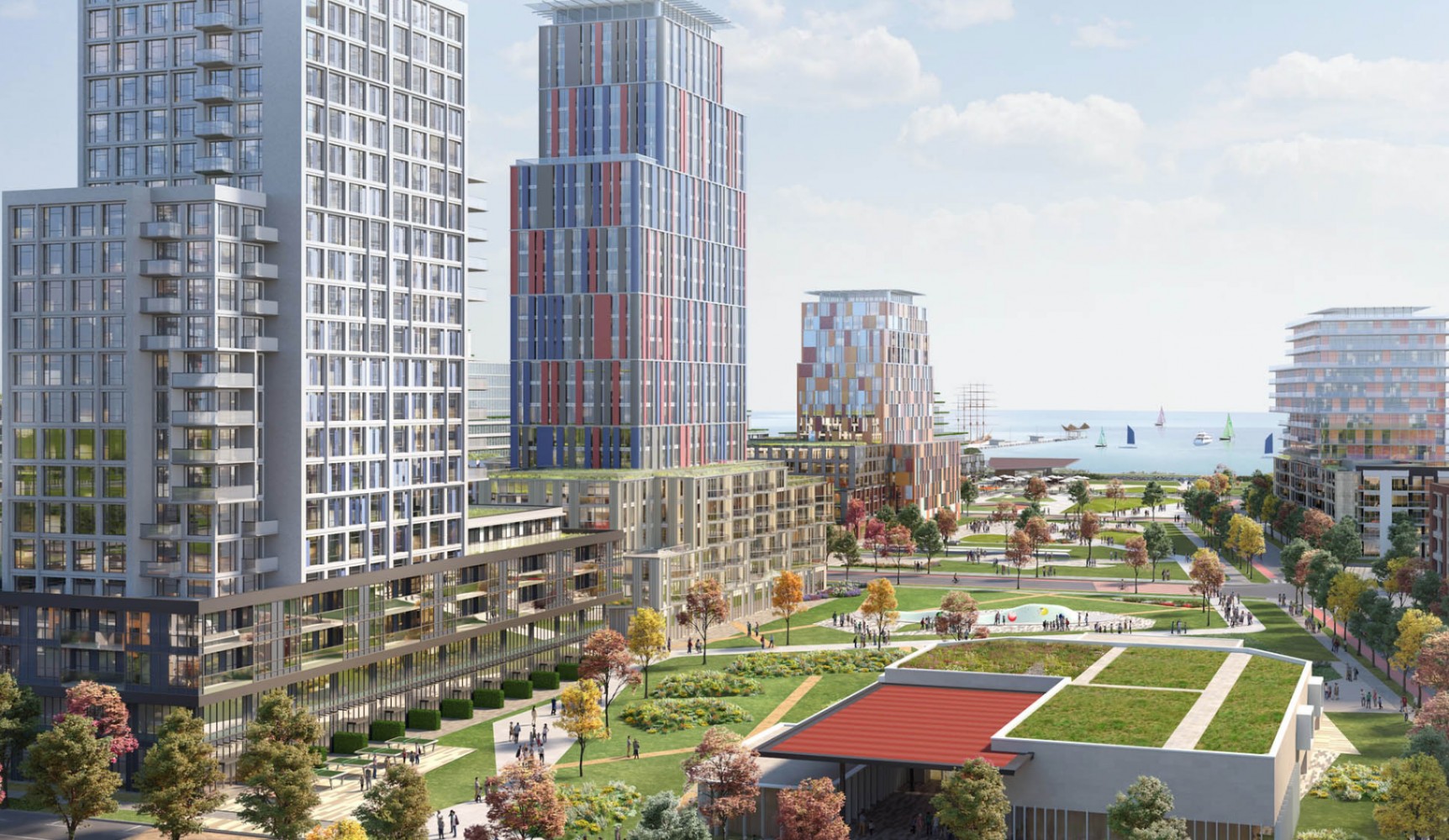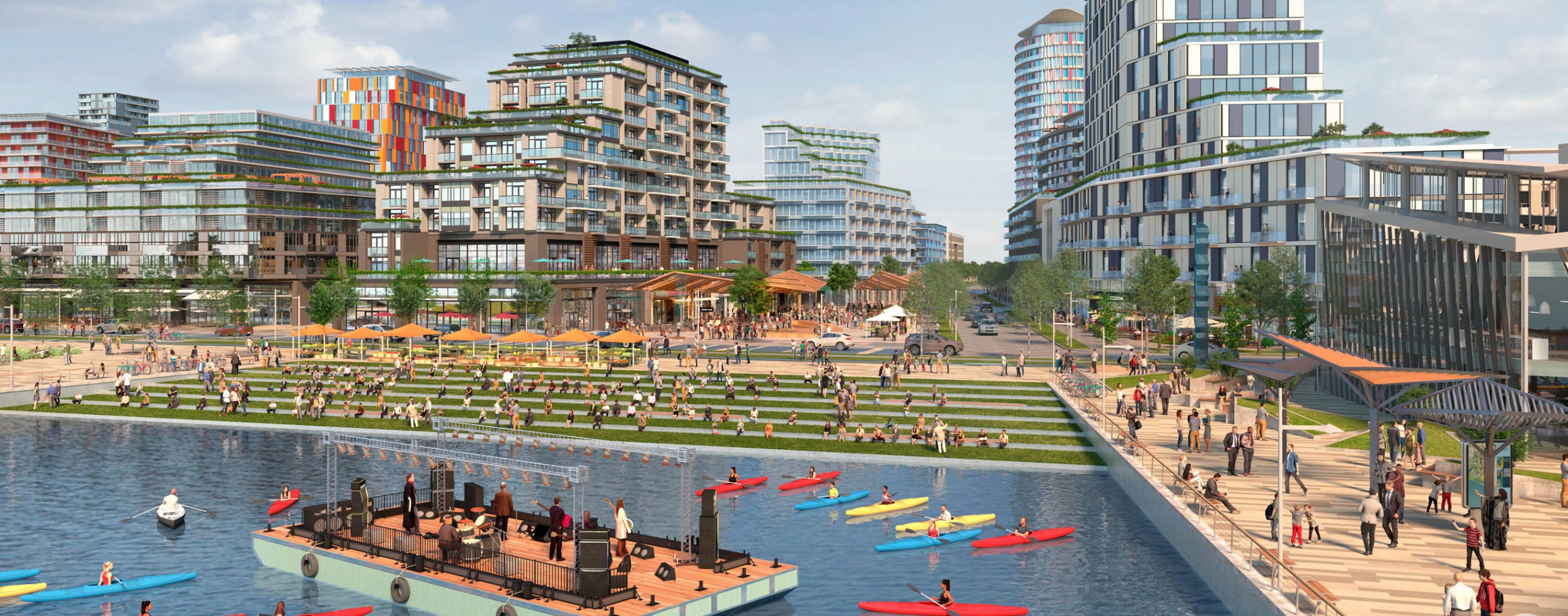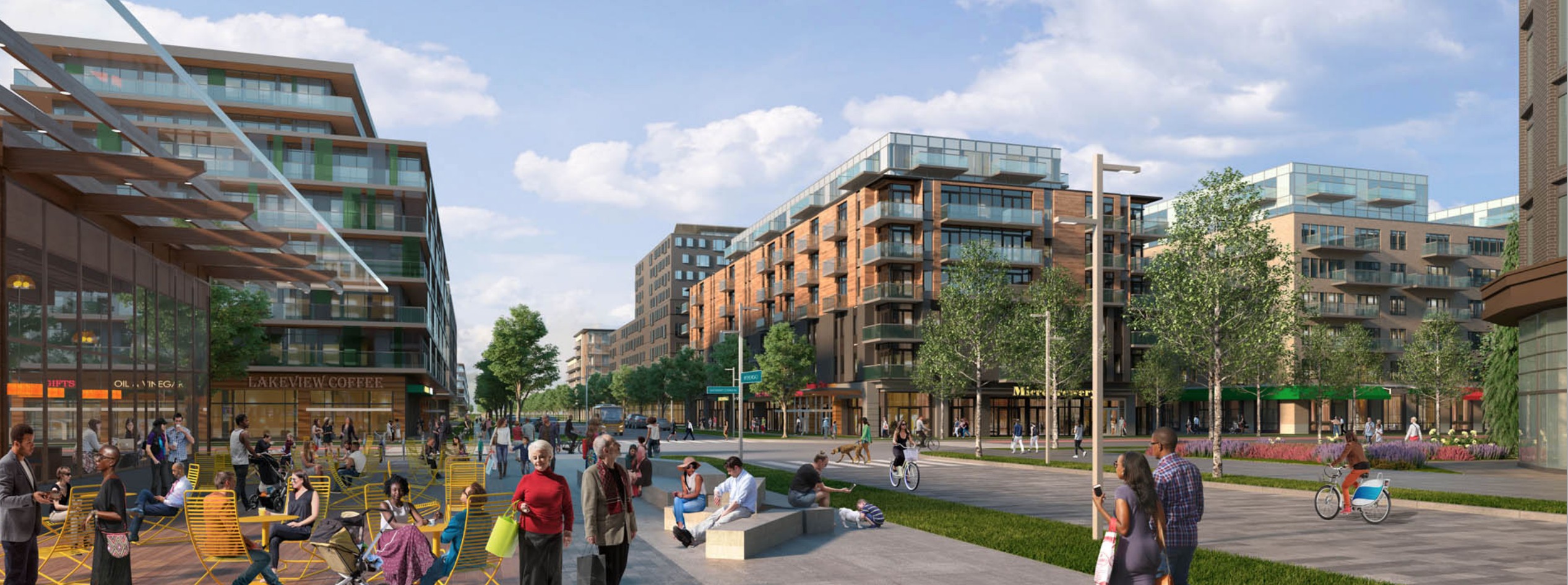
How a tug-of-war between developers and residents transformed plans for Mississauga's waterfront
The process of planning Lakeview Village began as long as 14 years ago and has gone through a series of stages — the completion of the Inspiration Lakeview Master Plan in 2014, an Official Plan amendment in 2018 and the endorsement of a new master plan in November 2019.
Six years ago, the publication of Inspiration Lakeview was a true watershed. It marked cooperation between city staff and residents to build for density that benefited the people, not just developers. It was initiated and led by locals who asked for construction in their own backyard and a waterfront parkland.


“This effort presents a once in a lifetime opportunity to build on the City of Mississauga’s policy direction, strategic initiatives and regional development interests, to create a sustainable new community along Mississauga’s eastern waterfront,” the Master Plan read upon publication.
The more than 100-page document laid out the history of Lakeview as a power generation plant, arms manufacturing base and military area, before introducing its potential future as a complete community. The plan was filled with innovative ideas to improve Mississauga as a whole, including space designated for a museum, a research campus to study the Great Lakes and a vast waterfront park with low buildings to maintain views of Lake Ontario.
The process laid out in the plan suggested its publication would be the end of master planning and the beginning of the next phase. It envisioned “implementation and next steps” to take roughly five years. Next, it saw completion of the revitalization project across the following two decades.
A development timeline according to Inspiration Lakeview
However, after the land for the project was eventually sold for development, a new Master Plan was submitted. Across four separate plans, known as 1.0, 2.0, 3.0 and 4.0, Lakeview Community Partners (LCP), the team behind the development project, pushed for changes.
The original Inspiration Lakeview plan had imagined 5,200 units, with an emphasis on mid-rise buildings. The 2018 Official Plan amendment allowed for 6,800 units, a significantly higher number.
In 2019, LCP’s ideas stood in even starker contrast to the original plan when its third proposal included 9,751 units. This suggestion was met with fierce opposition from the community who had masterminded the original concept and resisted by Ward 1 Councillor Stephen Dasko.
In October, LCP came back with a fourth version of its plan, offering concessions to resident groups. The Master Plan was accepted by councillors at the Planning and Development Committee, giving LCP the right to come back with an Official Plan amendment to suit its taller and denser plans.
“Inspiration Lakeview itself was 5,200 units — what we see today is a totally different scheme,” Deborah Goss, President of the Lakeview Ratepayers Association, told The Pointer.
Goss also spoke at the October meeting, praising the concessions that had been granted, but highlighting where there are still issues. In contrast with the original vision, LPC’s fourth plan included a 24 storey building by the water and a 40 storey tower nearby. Goss and her residents asked the developer to reduce height by the water and spread it around the middle of the site.
This was just the latest in the tug-of-war for Lakeview.
There is little doubt within the community that the fourth iteration of the developer’s Master Plan represented significant compromise. The question is if, after four redrafts of a development plan, it looks anything like the original Inspiration Lakeview document.
“In my opinion, Inspiration Lakeview was just dropped and the developers plan was substituted,” Professor John Danahy, who helped advise citizens on the plan, previously told The Pointer. “A lot of people think a lot of the same elements are there, but that is a totally different plan from the one everyone worked on. They were supposed to buy the land and buy the plan [but, they did not].”
Comparing Inspiration Lakeview to Lakeview Village’s fourth master plan shows where developers profit. In 2018, after the land was sold to LPC, the developer increased gains from 5,200 to 6,800 units. Then, after proposing a rise to almost 10,000 units, another concession was granted in the form of a further 1,226. These incremental changes were perhaps easier to swallow with individuals distracted from other areas where philosophical ground was lost.
For example, the approved master plan bears no reference to Inspiration Lakeview’s 5,200 units, instead using the negotiated 6,800 as a base.
Inspiration Lakeview was explicit on the topic of height. The 2014 plan suggested 20 percent townhouses, 55 percent mid-rise and 25 percent taller buildings. In 2018, the Official Plan tweaked this to 15 percent townhouses, 50 percent mid-rise and 35 percent taller elements. The original plan called for height and density to be increased towards the centre of the site, with a transition to mid-rise at the waterfront and aimed to maximize daylight hours and reduce shadows. Across the whole site, only one area (the Waterway District, shaded below) was to allow buildings above 15 storeys and, even then, those buildings were specified to be “architecturally significant buildings” that would “highlight the character of this new community.”
Any height above 15 storeys, according to Inspiration Lakeview, was also to be subject to an additional height study.
Height guidelines for the site according to Inspiration Lakeview
These careful guidelines and instructions did not make their way into LCP’s planning.
Instead, 11 towers exceeding 15 storeys are scattered through its design, with one reaching as high as 40. Where Inspiration Lakeview called for architectural significance for any big tower, only the tallest is subject to those rules in the new master plan. The two towers nearest the proposed restriction (24 and 29 storeys) have no such instruction noted, despite exceeding Inspiration Lakeview’s targets by nine and 14 storeys respectively.
“The density has become bigger, but it is also being pushed towards the water,” Goss said, adding the community asked developers why this was the case, having been given “no clear reason” to date. Among the issues this will cause for the community are shadows cast across the waterfront park and an obstructed view of the shoreline.
The height of towers in Lakeview Village's fourth and latest master plan
Consequences of throwing out elements of Inspiration Lakeview in search of greater profits are already beginning to show. The original plan called for an Innovation Corridor connected to a Serson Campus on the east side of the development, with one explicit purpose to guarantee a 150 metre barrier between residential units and the area’s adjacent wastewater processing plant. “Inspiration Lakeview recommends a minimum separation distance of 150 metres from the noise/odour producing source to the property line of a proposed sensitive land use,” the plan read. “The Master Plan meets this requirement by placing only employment, District Energy and utility, and institutional uses within the recommended 150 metre buffer area.”
Although the principle of the Innovation Corridor has been maintained, LCP has chosen to push for a few extra units by moving residential units 120 metres from the site. This move, while small on paper, moves potential residents in the area 30 metres closer to a sewage processing facility and, as Region of Peel staff put it, the “foul odours” it produces.
This decision by developers in their now-approved master plan has already caused conflict with the region. As previously reported by The Pointer, LCP would like the city and region to pay for odour reduction measures from development fees, despite the fact it chose to inch residents closer to the site. The dangers of ignoring a community-driven plan in favour of profit is demonstrated by the suggestion in the regional report that developers could deal with the issue by installing “automatic sliding doors on balconies” or adding “warnings on sales and lease agreements.”
A narrower Innovation Corridor in the latest master plan, bringing residential units closer to the sewage treatment plant
“We had an impact moving back the 40 storey tower [from the water] and bringing the green corridor back into play,” Goss said.
“For us, making sure the community is heard is key,” she added. “We’re still here — we’re not folding.”
According to Goss, the city now sees Inspiration Lakeview as a “vision” or a “dream,” but that’s not what residents were told. The purpose of the document was to guide an Official Plan amendment that would act as an instruction manual for future developers, not a wishlist.
However, that’s not how developers operate. They’re keen to maximize profits and are given the right to ask for amendments by the Planning Act.
A spokesperson for the City of Mississauga confirmed an Official Plan Amendment in line with the latest master plan had been reviewed and accepted by planning staff. As such, the reality of a developer-planned project, conceived on the bones of Inspiration Lakeview, has moved one step closer towards reality.
As the process marches on, engaged residents in Lakeview will continue to have the option to advocate for tweaks and changes they believe in. A meeting will be held on Thursday (Feb. 27 at 6:30pm) in the Mississauga Seniors Centre for feedback on the project.
Although developers have been gaining ground on residents in their tug-of-war, they’ve not hauled them over the line yet. How the project develops and is eventually finalized remains to be seen.
Email: [email protected]
Twitter: @isaaccallan
Tel: 647-561-4879
Submit a correction about this story


